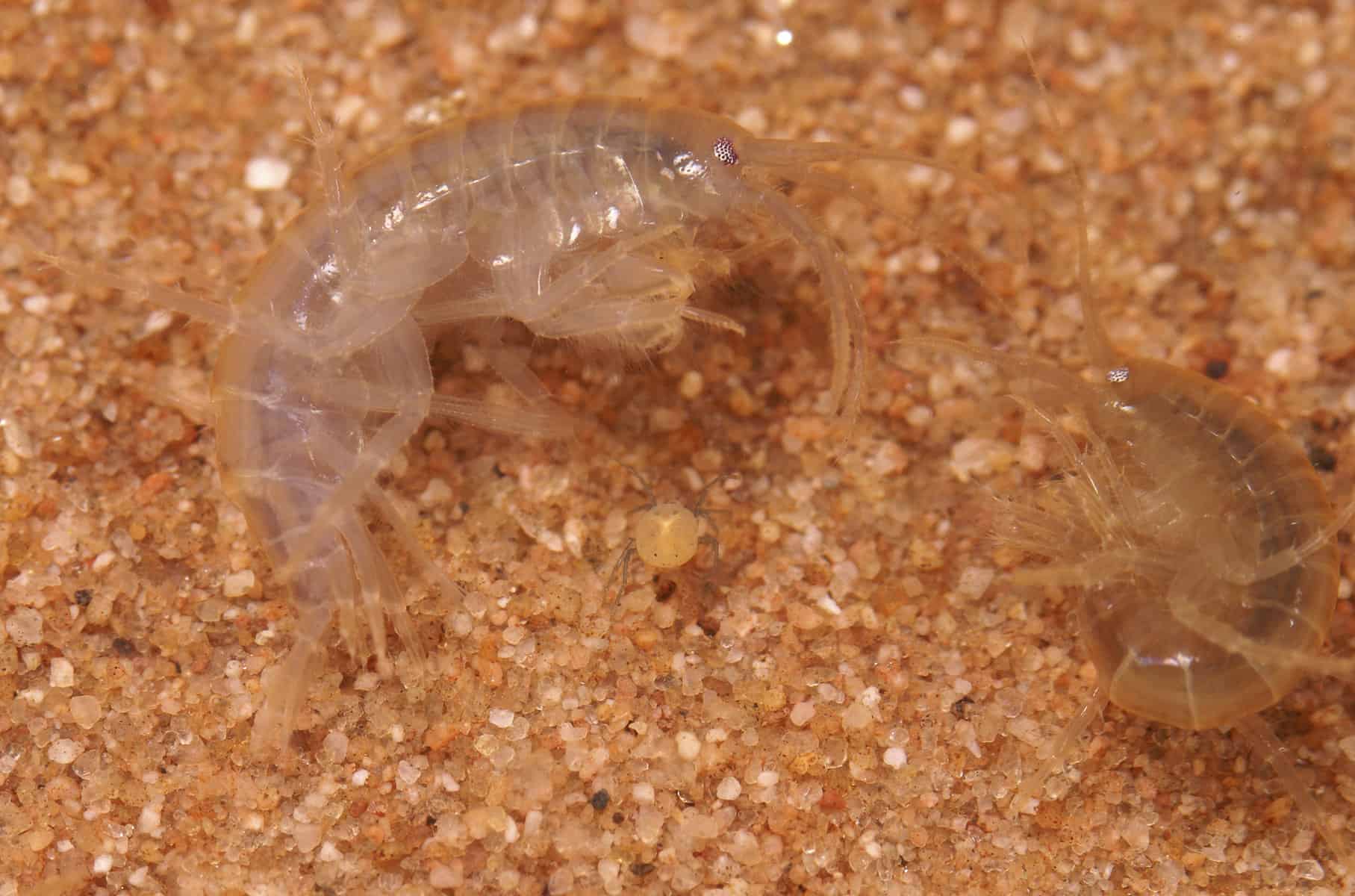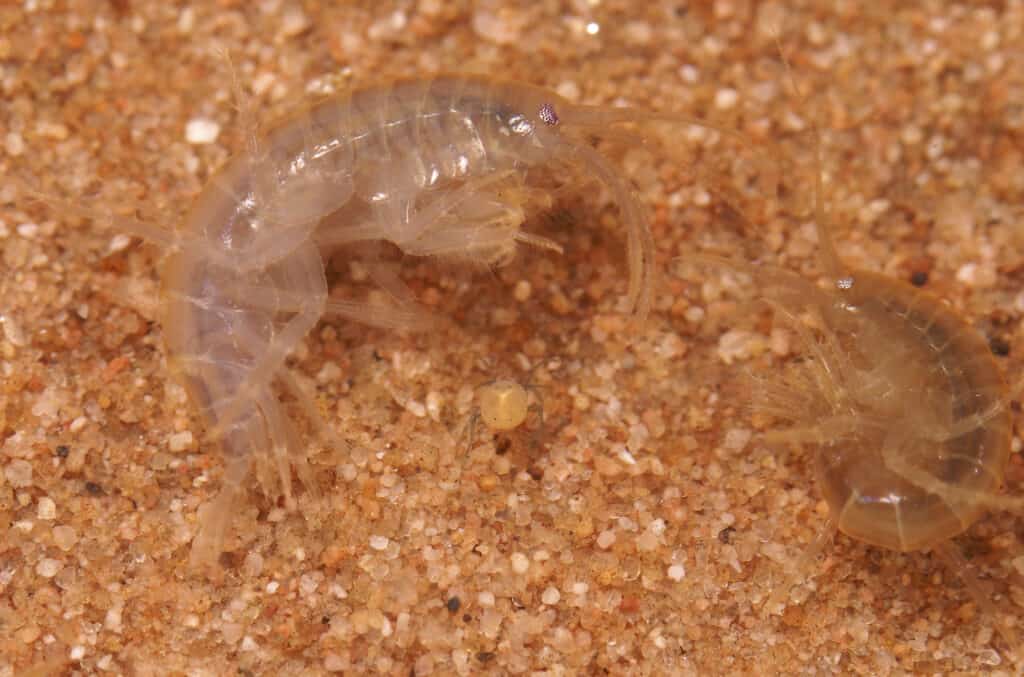If you have discovered tiny bugs in your fish tank, you may (understandably) be worried.
Fortunately, the bugs are probably water mites, and most species are harmless.
Still, having mites in your aquarium could signal that something else is wrong, and water mite populations can get out of control quickly.
Read this guide to learn what water mites are, how to identify them, and how to get rid of these pesky critters!
Key Takeaways
- Water mites are common aquarium inhabitants; while most are harmless and can be a food source for fish, an overabundance might signal underlying issues with water quality.
- Regular tank maintenance, including water changes and substrate cleaning, combined with quarantining new additions, is essential to control or eradicate mite populations.
- Always monitor water parameters, as high mite numbers could indicate the presence of harmful bacteria or poor water quality; maintain ammonia and nitrite at zero and nitrate below 20 ppm.
Summary Table
| Aspect | Key Points |
|---|---|
| Identification | Water mites are small, sometimes resembling tiny aquatic spiders or miniature shrimp, and may appear as black or white specks in the tank. |
| Harmful Effects | While most water mites are not harmful, an explosion in their population can affect water quality, harm plants, and carry diseases. Parasitic species may adversely affect fish. |
| Prevention | Maintain regular tank hygiene, quarantine new fish and plants, conduct partial water changes, and keep algae in check to prevent mite outbreaks. |
| Management | Clean the substrate with a vacuum, change up to 30% of tank water, and introduce mite-eating species to naturally reduce mite numbers. |
| Water Quality Monitoring | High mite populations could indicate poor water conditions; ensure ammonia and nitrites are at zero and nitrates below 20 ppm. |
| Treatment | For parasitic infestations, deep clean the tank and use over-the-counter parasite medications as directed. |
What Do Water Mites Look Like?
Some water mites look like tiny aquatic spiders. They have four pairs of legs, a round, unsegmented body, and a very small head.
Others look like miniature shrimp or small floating crystals.
From far away, water mites appear as black or white specks. They might appear in your aquarium plants, or you could see them floating around your tank.
Check out this post and thread started by Reddit contributor LieutenantJB. There’s a very helpful link to a page that shows pictures of lots of different mite species, and you might find yours there!
However, most of the time, you will not notice water mites unless there is a serious infestation. It’s scary just how quickly these bugs can multiply! I’ve only had one experience with water mites during the early years of my fishkeeping career.
I barely noticed their presence until, one day, I spotted a few tiny creatures swimming around in the tank. I used my siphon vacuum cleaner to remove the bugs from the water and thought no more of it. But within a few days, the mites were back in greater numbers! I carried out a deep clean on my tank, which got rid of the mites.
I can only assume the critters got into my tank with a bunch of new plants, so from that day forward, I always quarantine everything I add to my aquariums!
Are Water Mites Harmful?
There are more than 5,000 species of water mites, and they exist in almost every aquatic ecosystem.
Some water mites, such as the parasitic Acariformes, are harmful, but most are not.
The most common water mites in fish tanks include:
- Amphipods
- Copepods
- Ostracods
- Daphnia
While some water mites are parasitic and prey on small fish, most will be a tasty snack for your fishy friends.
Daphnia is one of the regal betta fish’s favorite treats!
Of course, mite populations can spiral out of control and cause serious problems for aquarium owners, especially those with closed aquarium systems.
For example, water mites can change your water’s pH, remove too much oxygen from the water, harm your aquatic plants, and carry diseases.
Too many mites can also crawl on your fish and irritate their skin, and some mites are parasitic.
Water mites can also create quite the eyesore in your aquarium, so we understand why you would want to get rid of them!
How Do I Get Rid of Mites in My Aquarium?
Water mites often come as hitchhikers with fish or plants you introduce to your tank, and they thrive in a dirty tank. That’s why cleaning and maintaining your tank regularly is so important, as well as quarantining new fish before introducing them to your aquarium.
Though the best way to get rid of water mites is to prevent them from invading your tank in the first place, you can clean your tank to get rid of the critters after the fact.
Start by changing up to 30% of your water and clean the substrate carefully with an aquarium vacuum cleaner.
Most mites feed on algae, so when you reduce the number of algae in your tank, most of the mites will die off naturally.
You can also introduce tank mates that will happily feed on water mites, such as shrimp or small, bottom-dwelling crabs. A cleanup crew will also help you keep your tank clean overall, so that’s a win-win.
Please know that getting rid of water mites is extremely difficult, and there will probably be some left, even with your best cleaning efforts.
Don’t worry, though; harmless water mites play an important part in healthy marine ecosystems.
Many fishkeepers are pleased to see a small population of copepods and amphipods living in their aquariums. After all, the more your tank mirrors your fish’s natural habitat, the more easily your tank goes through natural cycles, and the healthier and happier your fish will be.
Don’t Forget To Check Your Water Parameters
If you notice lots of water mites in your fish tank, be sure to check your water parameters.
A large mite population could indicate high levels of harmful bacteria or be a warning that something is going wrong in your tank.
Remember that ammonia and nitrites must be zero, and nitrates should always be below 20 ppm.
Water mites might not be a huge problem in and of themselves, but they could be a warning that something is seriously wrong in your aquarium environment.
How Do You Treat Water Mites?

Most mites can be left alone or reduced with a deep clean.
Nevertheless, if you are dealing with parasitic mites in your aquarium, you will need to treat your entire tank for parasites.
Fish that rub themselves on aquarium decorations, gasp for air at the water’s surface, or act aggravated or restless are telltale signs of a parasite infestation, and you must treat the tank accordingly.
Most species of parasites can killed by dosing your tank with an appropriate over-the-counter medication that you’ll get from your local fish or pet store.
So, What Do I Do About Water Mites in My Fish Tank?
If you see water mites in your fish tank, do not panic!
- Give your aquarium a deep clean; the mites should go away on their own.
- For extra help, consider adding shrimp or crabs to your tank.
- Don’t forget to check your water parameters while you’re cleaning.
- Water mites thrive in tanks with poor water quality, and you need to keep ammonia, nitrite, and nitrate levels down to protect your fish. You also need to ensure your tank water is clean.
Prevention
Water mites are so difficult to eliminate that it’s well worth taking steps to prevent them.
- Never introduce a new fish or aquatic plant without a quarantine period.
- Perform partial water changes (and substrate vacuuming) every 7-10 days to keep algae and bacteria under control.
Final Thoughts
Remember, most water mites are nothing to worry about and can even provide a source of tasty snacks for your fishy friends. However, it’s always good to clean your tank and check water parameters when in doubt.
If you suspect a parasite infection rather than harmless water mites, treat your fish with an appropriate over-the-counter medication from your local fish store.


